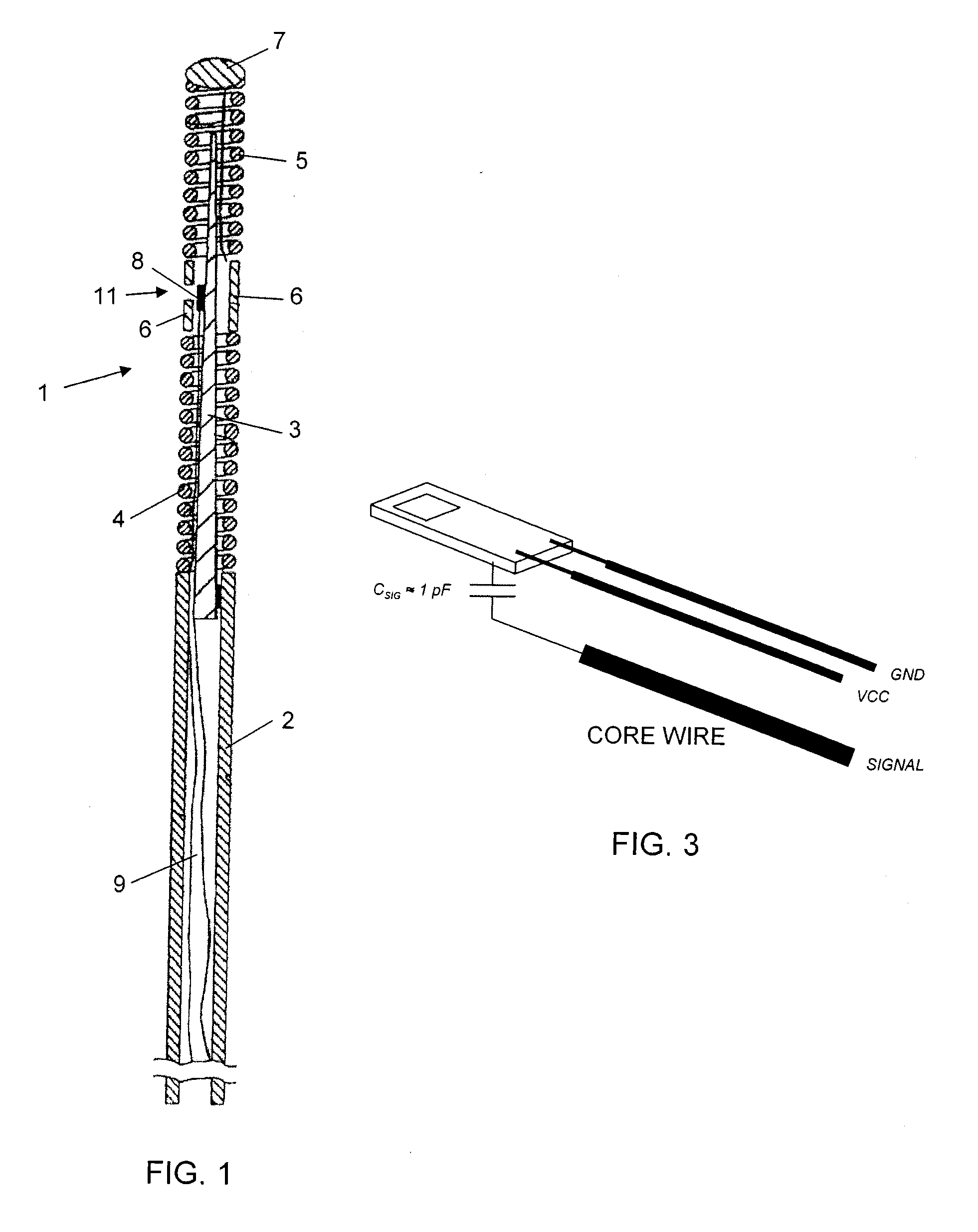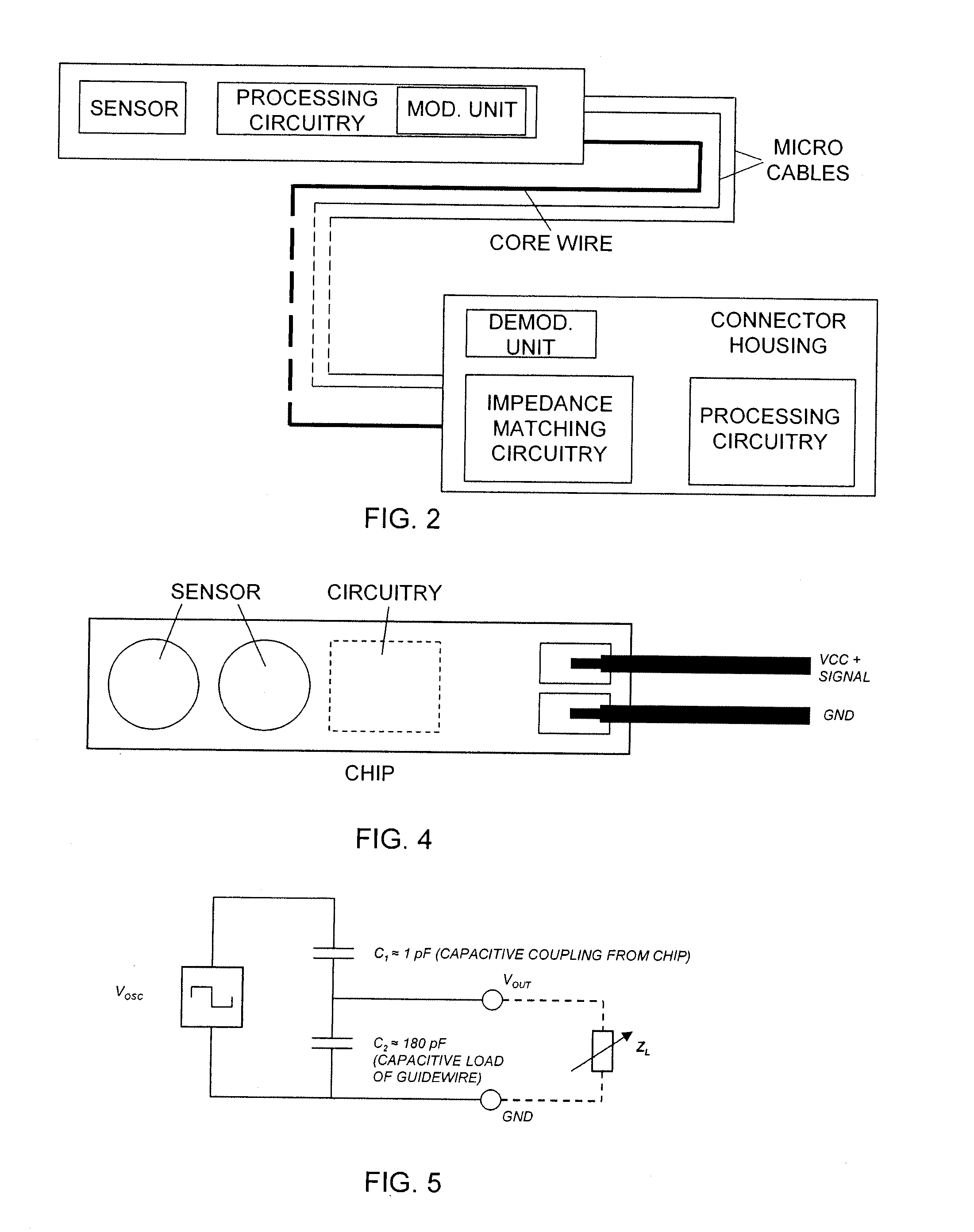Medical guide wire assembly
a technology of guide wire and assembly, which is applied in the field of medical guide wire assembly, can solve the problems of limiting the mechanical performance of the guide wire, difficult manufacturing, and affecting the signal transmission of such sensors, and achieve the effect of limiting excessive drive curren
- Summary
- Abstract
- Description
- Claims
- Application Information
AI Technical Summary
Benefits of technology
Problems solved by technology
Method used
Image
Examples
first embodiment
[0041]In the guide wire assembly the core wire is used to transfer the modulated sensor signal, i.e. being the active channel, one of the micro-cables is used for power supply of the circuitry and the other micro-cable is used as ground. This embodiment is illustrated in FIG. 3.
[0042]In order to secure safe signalling an impedance matching circuitry is arranged in the connector housing to take care of impedances between the core wire and the tubing. Two different alternatives are available, in one alternative the core wire is covered at its surface by an insulating layer, e.g. Teflon or a polymer, that may serve two purposes, to electrically isolate the core wire from the tubing and to reduce the friction between the core wire and the tubing. This two alternatives are schematically illustrated in the electrical representations of the guide wire shown in FIGS. 7 and 8, where FIG. 7 shows a so-called floating core wire, i.e. the core wire provided with coating, and FIG. 8 shows a so-c...
second embodiment
[0046]In the second embodiment, which is illustrated by FIG. 4, one of the micro cables is used as power supply of the sensor chip(s) and for signalling purposes and the other micro cable is used as ground.
[0047]In this embodiment the sensor signal is superimposed on the power supply DC voltage. This embodiment may require large on-chip capacitors (or voltage regulators) at the sensor circuitry chip. The signalling is preferably bidirectional, i.e. both from the sensor and active circuitry to the readout system and vice versa.
[0048]The signalling between the signal processing circuitry and the processing circuitry of the connector housing is performed by the modulated sensor signal which is transferred by using a multiple access technique
[0049]According to three different embodiments the multiple access technique is a frequency division multiple access technique, a time division multiple access technique, or a code division multiple access technique.
[0050]To achieve the modulation, ...
PUM
 Login to View More
Login to View More Abstract
Description
Claims
Application Information
 Login to View More
Login to View More - R&D
- Intellectual Property
- Life Sciences
- Materials
- Tech Scout
- Unparalleled Data Quality
- Higher Quality Content
- 60% Fewer Hallucinations
Browse by: Latest US Patents, China's latest patents, Technical Efficacy Thesaurus, Application Domain, Technology Topic, Popular Technical Reports.
© 2025 PatSnap. All rights reserved.Legal|Privacy policy|Modern Slavery Act Transparency Statement|Sitemap|About US| Contact US: help@patsnap.com



